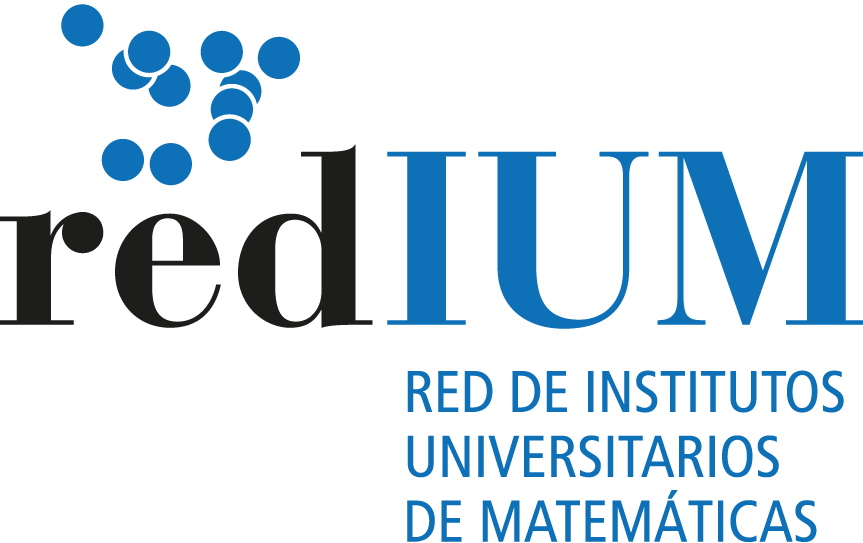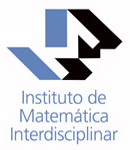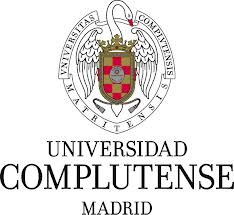- Programmes
EQUS (Entanglement in Quantum Systems)
1. Brief motivation 2. Programme proposal.
QIT and its importance
In the 80’s, Feynman, Bennett, Brassard and others started to realize that the unusual behavior of Quantum Mechanics (QM) could be used to dramatically improve the way in which we transmit and process information, with the consequent unpredictable applications in essentially all sciences. The amount and importance of the potential consequences of the development of QIT, together with the achievements got so far, have motivated the most prestigious research institutions and companies to invest in this revolutionary field.
Nowadays the field grows so rapidly that it is maybe worthwhile to present it divided in three (interconnected) subfields:
1.- Quantum computation, or how to use QM to improve the way we compute, regarding both hardware and software.
2.- Quantum cryptography, or how to use QM to transmit information in a more secure way.
3.- Theory of entanglement, or how to understand the purely quantum behavior of many body systems.
The role of mathematics
QIT is nowadays an interdisciplinary area, involving mainly Physics, Mathematics and Computer Science. Hence, any development in QIT will necessarily use these three fields. Having this into consideration, the results that our group has obtained so far, as well as those we intend to produce in the future, are very much mathematically oriented and put the emphasis in the mathematical aspects of QIT.
Mathematical theories like Cryptography, Information Theory or Numerical Calculus appear naturally in this context. Moreover, QM is formalized based on the Theory of operators in Hilbert spaces and, therefore, Functional Analysis (which is one of our areas of expertise) also enters the picture. Indeed, fields inside Functional Analysis like Local Banach Space Theory, Tensor Norms, Operator Space Theory, Probability in Banach Spaces, Convex Analysis, … have recently found important applications inside QIT [Au, Au2, Be, Bu, Ha, Ha2, Ho, Pe3].
This interconnection also provides new challenges for mathematicians, proposing new interesting problems, or areas that require completely new mathematics (as it seems to be the case for PEPS theory [Pe2]).
Concrete projects to be developed
1.- Understanding quantum correlations.
Bell inequalities [We] are the tool to distinguish quantum from classical correlations using experimental data. However, appart from very particular cases (like CHSH inequality) very few is known in this direction. This is of great importance from three different point of views: from a fundamental point of view it would be desirable to characterize which experimental data are (or not) purely quantum. From a practical point of view, since Bell violations are the only criterion valid to produce unconditionally secure quantum cryptography [Ac], it is desirable to know what is (and not) possible in this context. In addition, recent work [Ke] has shown a closed connection with game theory and complexity theory, that should be explored in more depth.
In our recent paper [Pe3] we established a new connection between Bell inequalities and the theories of Operator Spaces, Tensor Norms and Banach Algebras. Moreover, we showed its power by solving a long standing open problem of Tsirelson. The idea is to follow this direction trying to fully characterize the set of purely quantum correlations.
2.- New resources for Quantum Cryptography.
As commented above, most of the effort in quantum crypto has been devoted to the protocol of key exchange. However, in reality, there are many more situations (specially in the multi-partite case) in which different protocols are requiered (voting, surveying, secret sharing, …). Our aim is to isolate the “primitives” (in the sense of quantum states) needed for different multipartite protocols. This could indirectly lead to a (practical) classification of multipartite entanglement.
3.- MPS and PEPS.
This is the main objective of this project. Our aim is to continue the mathematical study of MPS and PEPS already started in [Pe, Pe2, Pe4]. In particular, we will concentrate on:
- Characterizing the existence of an energy gap (or equivalently criticality) in the Hamiltonians associated to PEPS. Appart from the inherent interest (since there are almost no criterion to decide the presence of gap in 2D) it could have applications in adiabatic quantum computation and in complexity theory.
- Classifying PEPS by renormalization flows (RF), that is, by properties that are scale-independent. Very few is know concerning RF in 2D. One of the few examples known is the recent work of Aguado and Vidal [Ag] in which they show that the toric code is a fix point in each step of the RF given by the MERA ansatz.
- Characterizing topology in PEPS. The first thing to do in this direction would be to look for a proper definition of topological order (at least in the context of PEPS).
- Understanding the existence symmetries in the context of PEPS.
References [Au, Au2, Be, Bu, Ha, Ha2, Ho, Pe3].We Ac Ke Pe Ag
[Ac] A. Acín et al., From Bell's Theorem to Secure Quantum Key Distribution, Phys. Rev. Lett. 97, 120405 (2006).
[Ag] M. Aguado, G. Vidal, Entanglement renormalization and topological order, Phys. Rev. Lett. 100, 070404 (2008)
[Au] G. Aubrun, S.J. Szarek, Tensor products of convex sets and the volume of separable states on N qudits, Phys. Rev. A. 73, 022109 (2006).
[Au2] G. Aubrun, I. Nechita, Catalytic Majorization and lp Norms, Comm. Math. Phys. 278, 133-144 (2008).
[Be] C. H. Bennet et al, Remote preparation of quantum states, IEEE Trans. Inform. Theory, vol. 51, no. 1, pp 56-74, 2005.
[Bu] H. Buhrman er al, Security of quantum bit string commitment depends on the information measure, Phys. Rev. Lett., 97, 250501 (2006) .
[Ha] P. Hayden et al., Randomizing quantum states: Constructions and applications, Commun. Math. Phys. 250(2):371-391, 2004.
[Ha2] P. Hayden, A. Winter, Counterexamples to the maximal p-norm multiplicativity conjecture for all p > 1, Comm. Math. Phys. 284(1):263-280, 2008.
[Ho] M. Horodecjki et al, Partial quantum information, Nature 436:673-676 (2005).
[Pe] D. Pérez-García, M.M. Wolf, F. Verstraete, J.I. Cirac, Matrix Product State Representations, Quant. Inf. Comp. 7, 401 (2007)
[Pe2] D. Pérez-García, M.M. Wolf , F. Verstraete, J.I. Cirac, PEPS as unique ground states of local Hamiltonians, Quant. Inf. Comp. 8, 0650-0663 (2008).
[Pe3] D. Pérez-García, M.M. Wolf, C. Palazuelos, I. Villanueva, M. Junge, Unbounded violation of tripartite Bell inequalities, Comm. Math. Phys. 279, 455 (2008).
[Pe4] D. Pérez-García, M.M. Wolf , M. Sanz, F. Verstraete, J.I. Cirac, String order and symmetries in quantum spin lattices, Phys. Rev. Lett. 100, 167202 (2008).
[Sho] P.W. Shor, Polynomial-Time Algorithms for Prime Factorization and Discrete Logarithms on a Quantum Computer, SIAM J.Sci.Statist.Comput. 26 (1997) 1484.
[We] R.F. Werner, M.M. Wolf, Bell inequalities and Entanglement, Quant. Inf. Comp 1 No.3, 1.25 (2001)
Participants
Coordinator:
- PÉREZ GARCÍA, David
Department of Mathematical Analysis
Faculty of Mathematics, UCM (Spain)
Profesor titular de universidad (Associate professor)
dperez@mat.ucm.es
Senior and postdoc:
- COONEY, Thomas
Department of Mathematical Analysis
Faculty of Mathematics, UCM (Spain)
Contratado proyecto (Research fellow)
tomcooney1@gmail.com - NAVASCUÉS, Miguel
Department of Mathematical Analysis
Faculty of Mathematics, UCM (Spain)
Contratado Quevadis (Quevadis Research fellow)
m.navascues@mat.ucm.es - PALAZUELOS CABEZÓN, Carlos
Department of Mathematical Analysis
Faculty of Mathematics, UCM (Spain)
Contrato Postdoctoral (Postdoctoral Fellow)
carlospalazuelos@mat.ucm.es - VILLANUEVA DÍEZ, Ignacio
Department of Mathematical Analysis
Faculty of Mathematics, UCM (Spain)
Profesor titular de universidad (Associate professor)
ignaciov@mat.ucm.es - WOLF, Michael M.
Niels Bohr Institute Professor, Copenhagen (Denmark)
UCM-distinguised avisor
Professor
PhD students:
- FERNÁNDEZ GONZÁLEZ, Carlos
Department of Mathematical Analysis
Faculty of Mathematics, UCM (Spain)
Graduate Student
cafernan@mat.ucm.es - GONZÁLEZ GUILLÉN, Carlos
Department of Mathematical Analysis
Faculty of Mathematics, UCM (Spain)
Becario FPI (FPI PhD fellow)
guillen@mat.ucm.es
Publications
|
Activities
- Course
Sistemas cuánticos de comunicaciones para distribución de claves criptográficas.
M. Curty, Universidad de Vigo (Spain)
April 12-16, 2010, from 10.30 to 12.30 hr.
Place: Seminar 222, Faculty of Mathematics, UCM
Organized by Department of Mathematical Analysis and IMI - Interdisciplinary Mathematical Institute.
Photo 1 - Photo 2 - Seminar QI
Quantum Information Theory: visions and perspectives
Michael Wolf (Niels Bohr Institute, Copenhagen, Denmark)
April 7, 2010, at 11.30 hr.
Place: Sala Enrique Linés, Faculty of Sciences, UNED (Paseo Senda del Rey, 9, Madrid)
Organized by Department of Materials Physics at UNED, and IMI-Interdisciplinary Mathematical Institute - Presentación del proyecto QUITEMAD March 12, 2010
- Seminar QI
Topological tensor Networks from Hopf algebras
Oliver Buerschaper, MPQ
February 24, 2010, at 15.00 hr.
Place: Room 222, Faculty of Mathematics, UCM
Organized by UCM Research Group "Matemáticas e Información Cuántica" and IMI- Interdisciplinary Mathematical Institute
Funding
Research Groups:
- Mathematics and quantum information // Matemáticas e información cuántica
Main researcher: David Pérez García
UCM Research Group 921379.
Research Grants:
-
Entrelazamiento en sistemas cuánticos
Code: MTM2011-26912
Main researcher: David Pérez García
Timing: 2012 - 2014
Funding source: MICINN, Spanish government
-
Quantum Engineering via Dissipation QUEVADIS
Code : 233859
Main researcher: David Pérez García
Timing: 2009 - 2012
Funding source: European STREP Project, VII Framework Programme, European Union
-
Quantum Information Technologies: Cryptography, Computation and Simulation QUITEMAD
Code: S2009/ESP-1594
Main researcher: David Pérez García (Main researcher: ENGL, HEINZ W.-Univ.Viena)
Timing: 2009 - 2012
Funding source: Comunidad de Madrid (Madrid region)
-
Matemáticas e Información Cuántica
Code MTM2008-01366
Main researcher: David Pérez García
Timing: 2009 - 2011
Funding source: MICINN, Spanish government
-
Matemática e Información Cuántica
Code: C3-0091
Main researcher: David Pérez García
Timing: 2008 - 2011
Funding source: MICINN, i-math Consolider, Spanish government
-
Which is the dimension of my system? Part II
Code: FUT-C5-0340
Main researcher: David Pérez García
Timing: 2008 - 2011
Funding source: MICINN, i-math Consolider, Spanish government
- Which is the dimension of my system? Part I
Code: FUT-C4-018
Main researcher: David Pérez García
Timing: 2009
Funding source: MICINN, i-math Consolider, Spanish government
- Last News
- Tribuna Complutense. En la ciencia y en la vida, todo está escrito en matemáticas (artículo sobre el curso de verano "Matemáticas ¿para qué?"). 3rd July 2017. Read more
- RedIUM
 IMI is a member of RedIUM, Red de Institutos Universitarios de Matemáticas. See List of members. See official website.
IMI is a member of RedIUM, Red de Institutos Universitarios de Matemáticas. See List of members. See official website. - Ph.D. programsIMI researchers are currently involved in the following Ph.D. programs in Mathematics:


